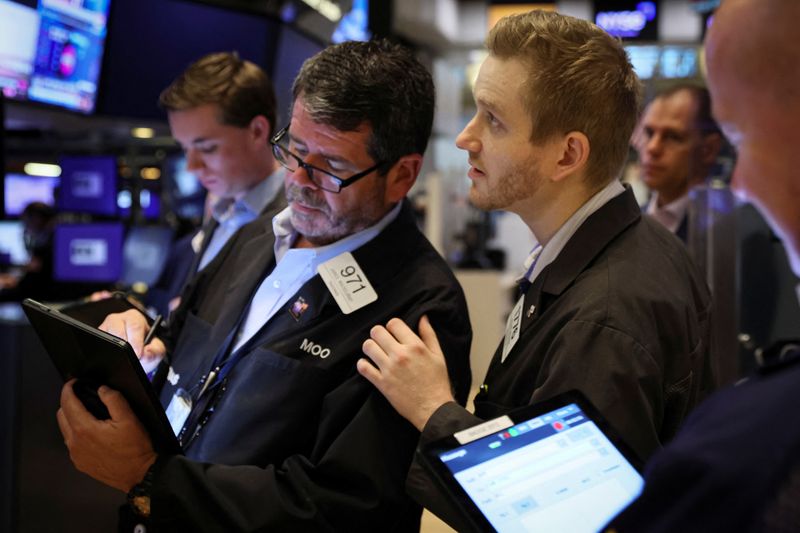By Devik Jain and Sruthi Shankar
(Reuters) -U.S. stock indexes jumped on Friday on expectations that cooling wage growth in August could help ease some price pressures and encourage the Federal Reserve to be less aggressive in its rate hike cycle.
All the S&P 500 sectors were higher in afternoon trading, while rate-sensitive growth stocks struggled after the Labor Department's report showed U.S. employers hired more workers than expected last month.
However, average hourly earnings rose 0.3% compared with estimates of 0.4%, while the unemployment rate edged up to 3.7% from a pre-pandemic low of 3.5%, indicating that the Fed's efforts to front-load rate hikes were beginning to take effect.
"It's really the Goldilocks scenario both for the economy and investors because it means that you see some easing in inflationary pressures and signs of healthy economy," said Nicholas Anderson, portfolio manager at Thornburg Investment Management.
"Slower wage growth, slower jobs growth, higher labor force participation is generally supportive of the Fed's objective of cooling inflation without wrecking the economy."
Wage growth data is seen as important to the Fed's deliberations on increasing interest rates as the central bank looks to bring inflation, running at four-decades high, back to its 2% target.
The focus now shifts to the August consumer price report due mid-month, the last major data available before the Fed's Sept. 20-21 policy meeting.
Traders now see a 58% chance of a third straight 75 basis points rate hike, down from 70% before the jobs report, according to CME Fedwatch tool.
"The (jobs) data will certainly moderate the negative sentiment in market. But there is going to be a lot of nervousness around the Fed's decision," said Kristina Hooper, chief global market strategist at Invesco.
"What we know about policymakers is they are likely to be rather hawkish because it helps them to manage inflation expectations, and that will be an ongoing source of angst for the stock market."
Fears of aggressive policy tightening have gripped Wall Street recently, with the S&P 500 sliding nearly 4.5% since Fed Chair Jerome Powell's hawkish remarks last week about rate hikes. His views were later echoed by other policymakers.
All the three main indexes are set for a third straight weekly loss.
At 12:10 p.m. ET, the Dow Jones Industrial Average was up 313.92 points, or 0.99%, at 31,970.34, the S&P 500 was up 42.46 points, or 1.07%, at 4,009.31, and the Nasdaq Composite was up 110.45 points, or 0.94%, at 11,895.57.
Energy stocks advanced 3% as oil prices gained nearly 2% ahead of OPEC+ meeting to discuss potential production cuts. [O/R]
Banks added 2.2%, led by a 2.7% climb in shares of Bank of America (NYSE:BAC).
Shares of Amazon.com (NASDAQ:AMZN), Microsoft Corp (NASDAQ:MSFT) and Apple Inc (NASDAQ:AAPL), which suffered the brunt of the recent selloff, rose between 0.9% and 2%.
The CBOE volatility index, also known as Wall Street's fear gauge, fell to a one-week low of 23.34 points.
Markets are closed on Monday on account of Labor Day holiday.

Advancing issues outnumbered decliners by a 5.36-to-1 ratio on the NYSE and by a 2.19-to-1 ratio on the Nasdaq.
The S&P index recorded three new 52-week highs and one new lows, while the Nasdaq recorded 39 new highs and 95 new lows.